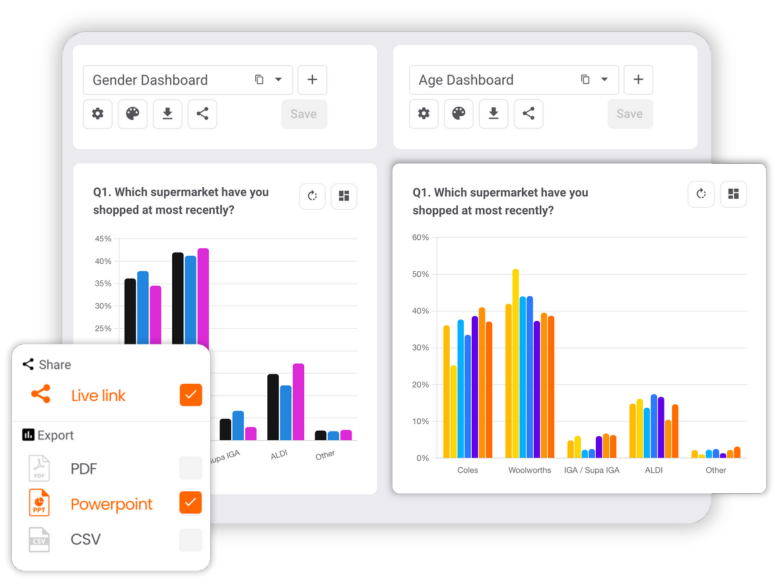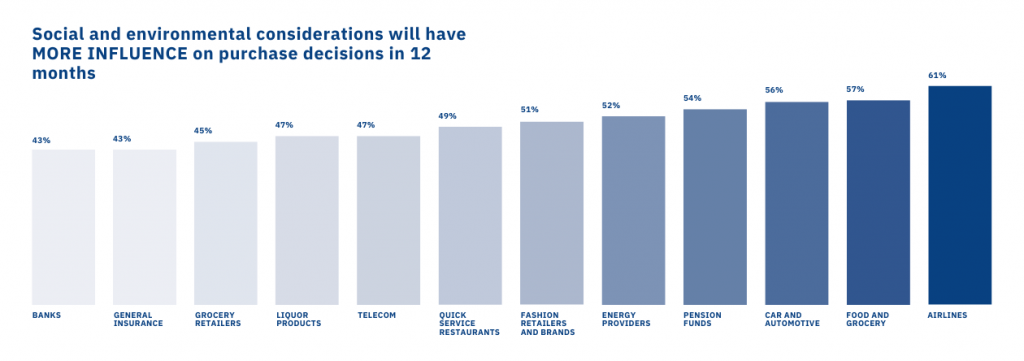2025 is shaping up to be another high-stakes year for businesses. The economic uncertainty of recent years hasn’t let up, competition is fiercer than ever, and technology is rewriting the rules at lightning speed. Success in this climate will require a sharp focus on customers, an edge over competitors, and a strategy grounded in actionable insights.
That’s where market research comes in. Done right, it’s your secret weapon to navigate uncertainty, capitalise on opportunities, and stay one step ahead. Australian businesses spend $2.8B annually on market research (Source: ESOMAR Global Market Research 2023) – that’s a level of investment that you want to ensure is working effectively and efficiently. So, let’s dive into 7 punchy, proven tips to help you win using market research in 2025.
7 tips for better market research in 2025
Here are 7 winning tips to leverage market research for success this year:
1. Embrace AI for deeper insights
AI isn’t just a buzzword anymore—it’s an increasingly potent force behind faster, smarter insights.
Automation and AI are transforming market research. They allow you to capture data more quickly, transform it more efficiently, analyse massive data sets, predict trends, and reduce the time and effort required to gain insight. Platforms that integrate AI let you move from reactive to proactive, helping to make decisions faster.
Survey platforms like Glow utilise AI to streamline and accelerate the research process, in areas like data quality assurance, language translation and thematic data analysis. What happens under the surface is often more important than the visible manifestations of AI, so check how your tech partners use AI and what controls are in place to harness and control its application.
AI can help save you time, money, and guesswork. Look for ways to use AI to surface existing data or more efficiently investigate blindspots.
HOT TIP
Remember data quality. AI analysis of bad data leads to bad actions. Ensure you are comfortable with the source of your data and its quality before you let AI turbo-charge its utilisation.
2. Monitor market dynamics regularly
The pace of change is not slowing down, so your insights should keep up. Regular market and brand health checks are crucial for understanding shifting customer behaviours, new competitor strategies, and evolving economic conditions. Implementing simple adjustments, such as conducting bi-monthly sentiment checks, can help you avoid costly mistakes and ensure you effectively meet customer needs.
Big wins come from small, consistent adjustments.
Brand health tracking is important for all brands, big or small, but how you do it might change. Smaller brands or those with tight budgets can use bi-annual or quarterly brand dips to stay in touch with the market. Brand portfolios or brands spending heavily require continuous tracking to optimise the ROI from their marketing efforts.
HOT TIP
Customisation is king. You’ll get more value and actionability from a custom tracker built for your needs than a syndicated ‘out of the box’ solution. And custom solutions don’t necessarily cost more.
Example: Continuous measurement of brand health enabled media agency Atomic212 to adjust media channels, activity weight and tactics to respond to competitor activity and consumer behaviour, enabling their client to continue to grow despite category sales declines.
3. Adopt an agile research approach
Speed is everything. Quick-turn insights mean you can act while the opportunity is still hot.
Agile research allows you to test concepts, messaging, or new product ideas in real time.
Stop guessing and start knowing—fast.
With platforms like Glow, you can build and run surveys that capture actionable results within hours, not weeks. And powerful dashboards enable you to find the insights in your data in real-time so you can act quickly.

HOT TIP
Insight isn’t action. Analysing data to find actionable insight is only the first step. The transition from insight to action is fuelled by sharing data easily with stakeholders in a digestible format.
Ensure your research tools support easy collaboration and data sharing; otherwise, you might just be naval gazing.
Example: Multinational wine brand AVL uses Glow to test new product concepts across markets, assessing appeal and optimising concepts before launch. As part of that process, they use customisable dashboards to share the right information with other team members.
4. Test before you invest
It’s smarter—and cheaper—to find out what works before putting big money on the table.
Concept testing and creative testing are not just good practice—they are essential. Whether it’s a product launch or a marketing campaign, testing ensures that you’re spending wisely and positioning yourself for success.
Would you risk 95% of your budget without spending 5% to ensure it works?
There any many ways to test ideas, communications and advertising before you go to market. Received wisdom used to be that pre-testing was often unhelpful and ‘killed creativity’. However, an improved understanding of how people respond to marketing, better research methodologies and new technology now means that respondents can be presented with more evocative mock-ups and asked their opinions more effectively. The net effect – more accurate assessment of end results.
“Pre-testing has transformed marketing effectiveness”
Les Binet
HOT TIP
Ensure your stimulus is as close to the finished product as possible. The more reflective of the end experience, the better the read you’ll get from your audience.
AI tools like Storyboarder have made this faster, easier and more affordable.
Example: A global ad agency used Glow to test three creative directions as part of a competitive pitch process for a major financial institution. This enabled them to select the most compelling idea and refine the execution. They won the business.
5. Own your insights
In 2025, control is king. With privacy concerns rising and third-party cookies deprecating, building your own data asset is key and research has a role to play. DIY+ platforms make it easier to field, capture and integrate customer research data, giving you faster, more cost-effective access to insights. No more waiting for market research agencies to deliver—you can act on your timeline.
Control your data, control your destiny.
Don’t treat customer research like another box to check; it’s your secret weapon for enriching customer understanding, strengthening your data assets, and powering precision marketing.
HOT TIP
Use platforms that let you capture insights from multiple stakeholder groups—employees, customers, prospects, and the wider market.

Example: A leading drink brand used Glow to compare the attitudes of loyal customers with broader category shoppers during a product launch. The approach was faster and more cost-effective than a traditional agency, delivering rich, actionable insights that shaped both the launch and the marketing strategy.
Stay ahead by owning your insights—because in 2025, agility and accuracy are everything.
6. Identify key decision drivers
Today’s consumers want it all. Great quality, fair prices, and a brand they can believe in.
Research has shown sustainability is no longer a “nice-to-have”; it’s an increasing influence on purchasing decisions, especially for younger audiences. But customers WON’T compromise on price or convenience just to go green.
Understand what truly drives decisions.
To win in 2025, you need to map out your customers’ decision hierarchy. Which factors matter most—price, quality, sustainability, or something else? Insights here are critical for aligning your efforts and messaging with what actually influences behaviour.
HOT TIP
Assess sustainability’s role in the decision-making process across different segments.
As we recover from the cost-of-living crisis, sustainability will continue to grow in importance, so knowing how it compares to other priorities across cohorts will help direct marketing.

Example: A global water brand used Glow to assess the impact of its sustainability messaging, interrogate category decision drivers, and evaluate the impact of new messaging across consumer groups. The insights helped improve the positioning and messaging for key products.
Social platforms aren’t just where customers shop—they’re where they share, engage, and influence. In 2025, social commerce is booming, and every click, comment, and purchase is a treasure trove of insight waiting to be tapped.
Where your customers are shopping is where you should be learning.
Social commerce isn’t just about driving sales; it’s a direct line to understanding customer preferences. From live-stream shopping events to shoppable ads, these platforms allow you to gather insights while engaging customers where they’re most active.
HOT TIP
Gather thoughts and opinions to supplement behavioural data by embedding short surveys into shopping experiences using short URLs or QR codes.
Example: A retailer provided current customers with extra value by adding relevant product samples to their home-delivered purchases. A quick survey was used to assess the value of the sample and interest in future product samples.
Don’t just survive 2025—dominate it
When it comes to driving success in 2025, staying reactive isn’t enough—you need to be proactive. Market research is about more than data; it’s about decisions. The right insights, captured at the right time, will give you the edge to thrive in an unpredictable world.
Ready to power your decisions with smarter insights? Platforms like Glow make it easier than ever to ask the right questions and act on the answers.
Sign up for free today or book an intro meeting with one of our team.
Written by:

Matt Houltham
CMO at Glow

7. Leverage social commerce for direct consumer insights